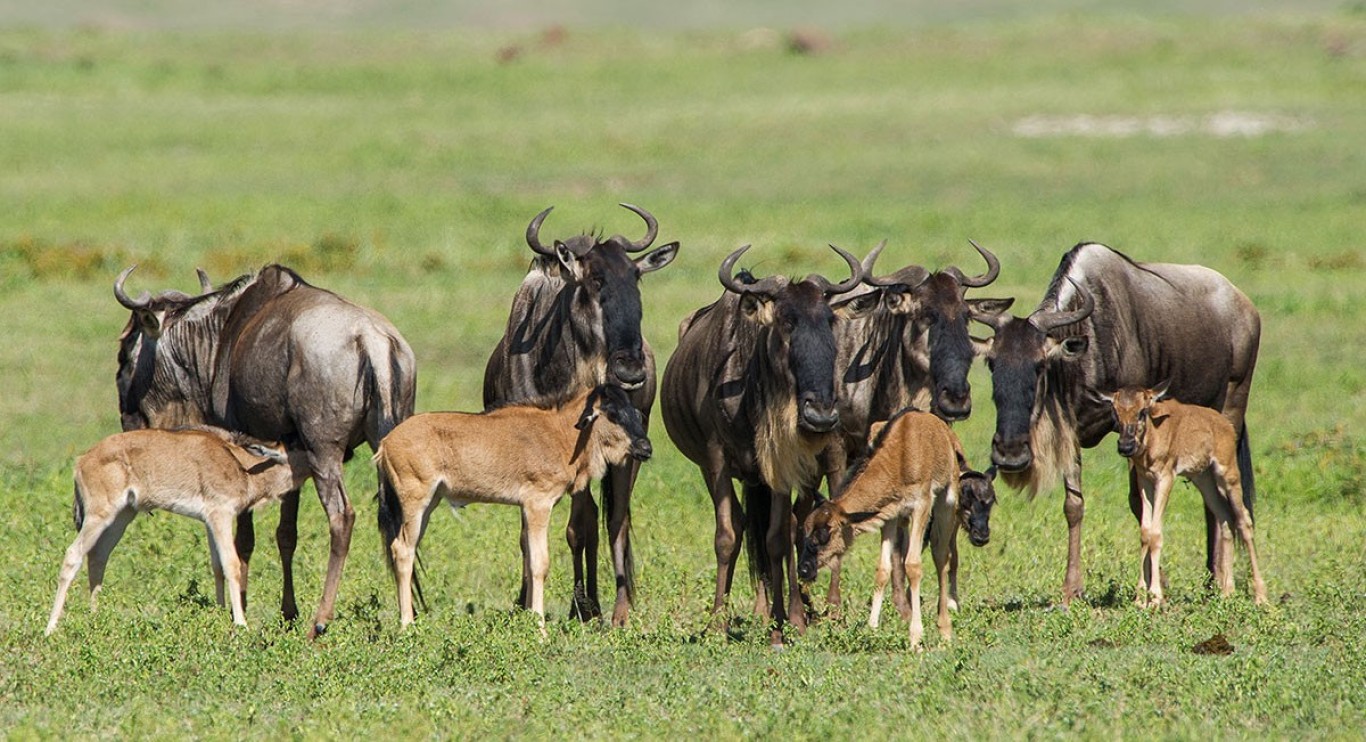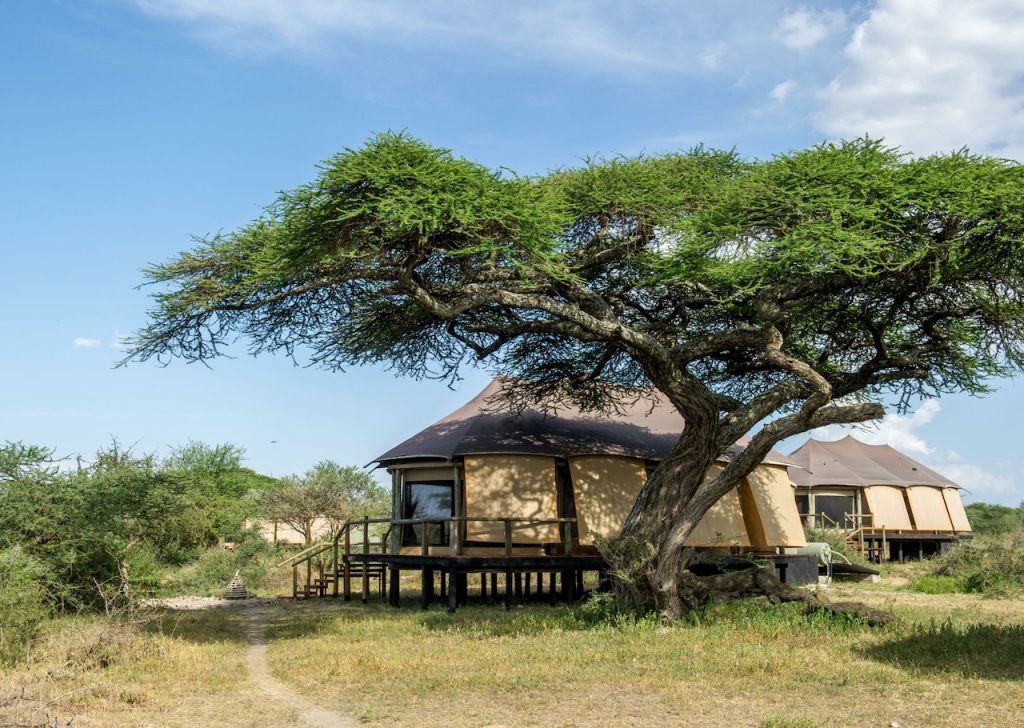Ndutu Plains is a remarkable intersection of two of Tanzania’s most iconic wilderness areas; Ngorongoro and Serengeti National Park. The plains are nestled within the northern section of the Ngorongoro Conservation Area, bordering the Serengeti National Park, which is why the area is often referred to as the Southern Serengeti, although administratively, it is within The Ngorongoro Conservation Authority Area (NCAA).
The Ndutu Plains are characterized by vast, mineral-rich rolling grasslands that stretch endlessly toward the horizon, which are very crucial in the cycle of the wildebeest migration. Ndutu is where the migration begins every year when more than 1.5 million wildebeests congregate in this area from December to March, for their breeding and calving season. The actual calving has its peak in mid-February and it is estimated that more than 8000 calves are born daily during this peak calving season.
This yearly pilgrimage to Ndutu in the Southern Serengeti plains is what keeps the wildebeests herds population healthy, as many calves are born, after a year of long trekking, and of course the river crossing towards Masai Mara where many lose their lives on the way.
Geography of the Ndutu Plains
The Ndutu Plains are characterized predominantly by expansive open savannah grassland dotted with acacia woodlands which provides valued shade and vantage point for the big cats of Ndutu.
The plains lie on nutrient-rich volcanic soil (black cotton soil) originating from historic eruptions in the nearby Ngorongoro Highlands, which contributes to the soil’s exceptional fertility. During the rainy season from December to April, these lush grasslands transform into one of the most important calving grounds for wildebeest and zebra as part of the annual Great Migration.
The combination of open spaces, fertile grounds, seasonal lakes, and adjoining woodlands creates an ideal habitat not only for vast migratory herds but also for diverse predators, including lions, cheetahs, and hyenas, making Ndutu one of the most wildlife-rich areas in East Africa, especially during that December to April; calving season.
The combination of open spaces, fertile grounds, seasonal lakes, and adjoining woodlands creates an ideal habitat not only for vast migratory herds but also for diverse predators, including lions, cheetahs, and hyenas, making Ndutu one of the most wildlife-rich areas in East Africa. There are two major lakes found in this area; Lake Ndutu and Lake Masek. Both lakes are an important habitat for aquatic birds like flamingos but also an important source of water for the animals that are resident in this area as well as the migrating animals.
Further enhancing the area’s ecological diversity are verdant marshes that attract a myriad of birdlife and create critical watering points for animals.


